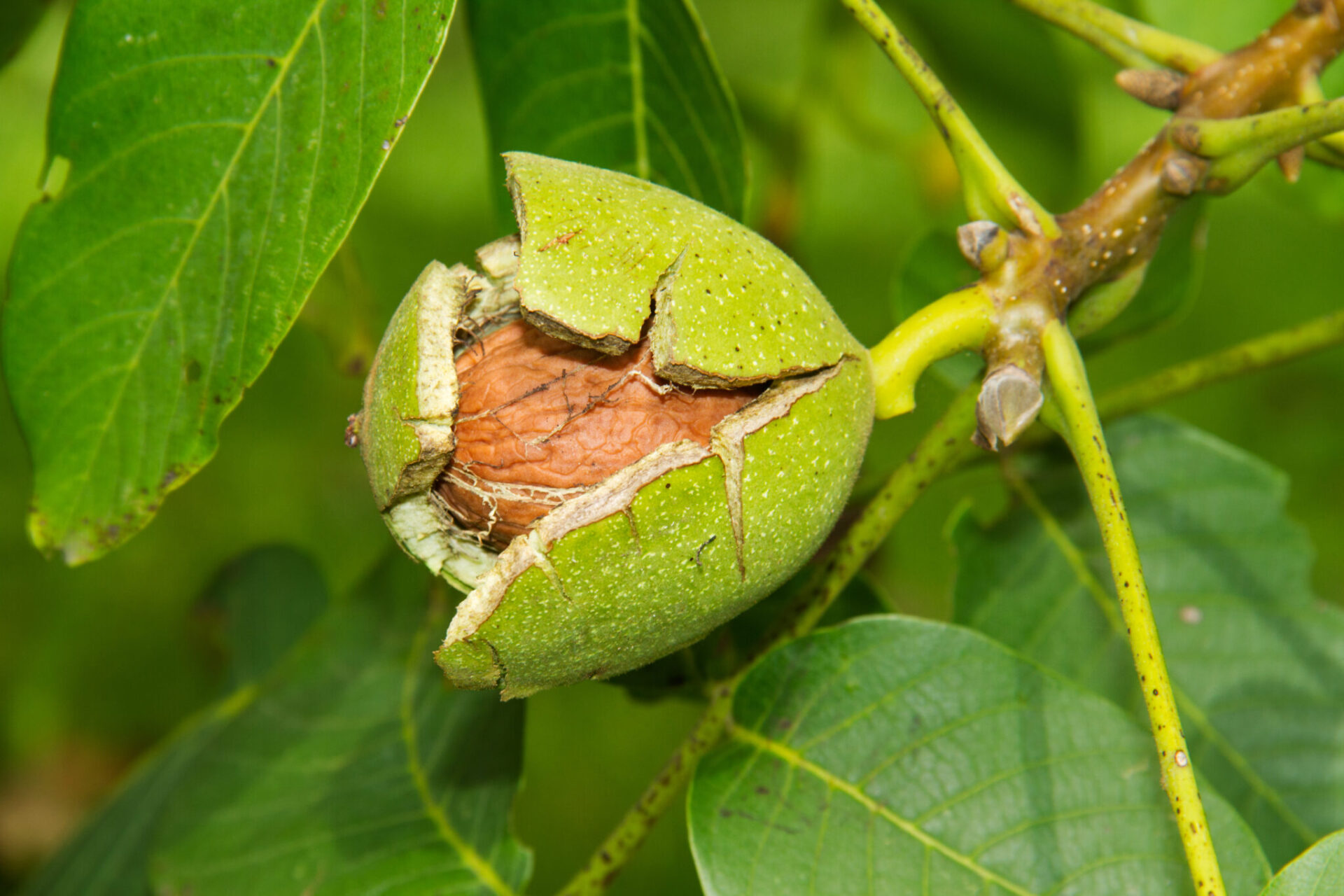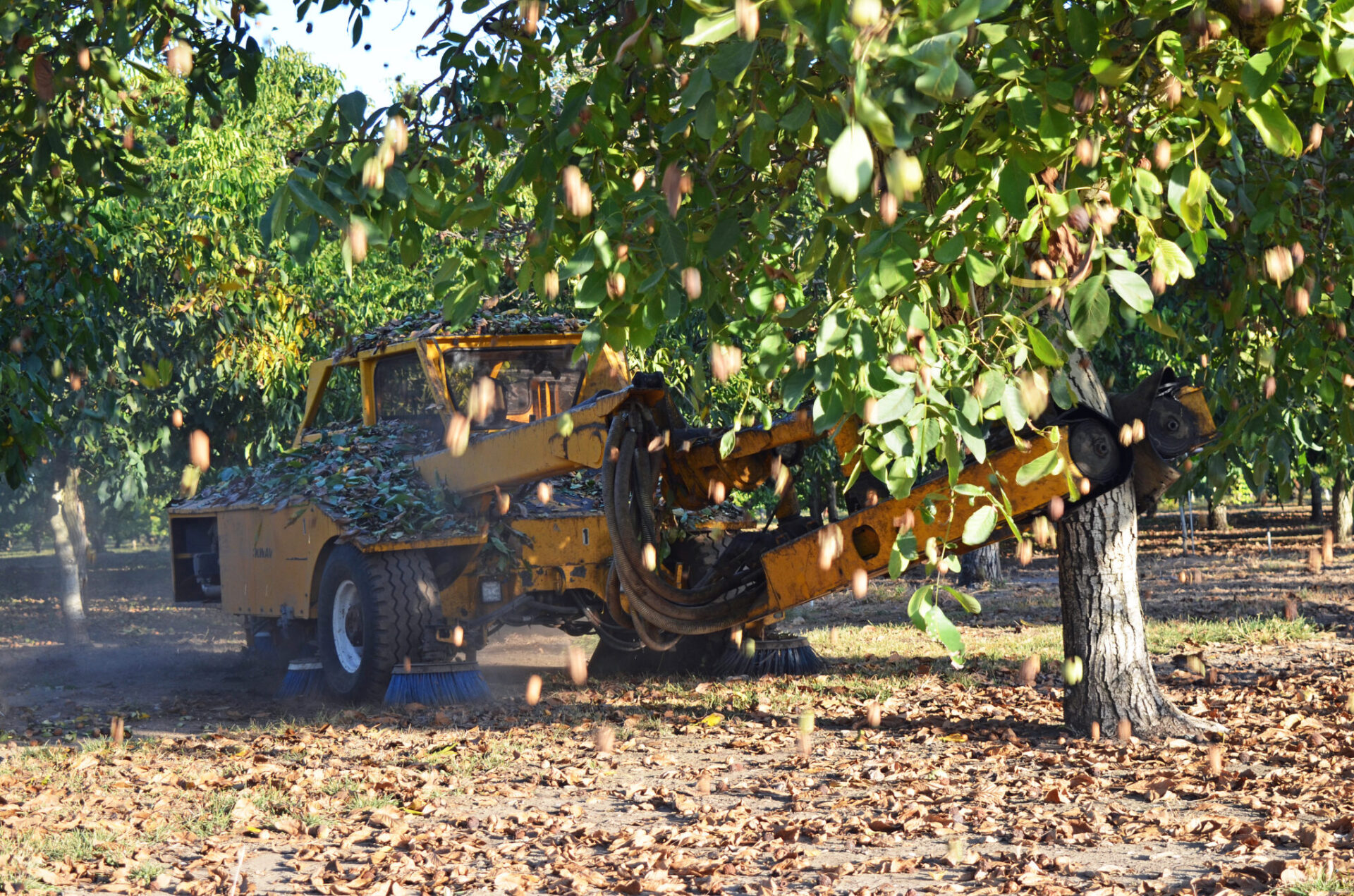It’s that time of year again. Harvest is in full swing for almonds, pistachios have started and walnuts and pecans are right around the corner. What better time for more of Rich’s goofy analogies than now, and certainly, right after the Olympics. So, let’s get back to comparing your trees to athletes. I read somewhere five years ago that Michael Phelps was consuming 10,000 to 12,000 calories per day when he was in beast mode getting ready for the gold medals he was planning to drape over his swollen neck. When they described the meals he was eating, items such as pancakes, sausage, oatmeal, bacon, syrup, butter, toast, eggs, fruit, steak, etc., it seemed insane. And then you think about how he was doing it: he had to eat five to six meals per day to keep that insane pace. He could have theoretically gotten all those weekly calories out of one 14-pound T-bone, but he didn’t. And he sure as heck didn’t eat 50,000 calories on Monday for a training swim on Saturday. How cool would that be?! A Sunday-night food coma, followed by four days of rest and 24 hours of training… done for the week! Sign me up. Except it doesn’t work that way. Neither will it work for your trees if you hope to get anywhere close to optimal yields.
So why do we insist on feeding our hard working trees like that? Why give them a frozen side of beef when they want a steak? Year after year, I get called to new farms where phosphorus levels and early calcium levels are low. After a bunch of questions and answers, they are more exasperated wondering how all the nutrition they placed never got into the trees. I tell them to stop feeding them a frozen side of beef and give them a few nights of a perfectly cooked 12 oz. ribeye with just the right amount of salt and pepper, a baked potato with butter and sour cream, and a good scoop of sautéed veggies. Now you’re hungry and lost in translation.
Although that frozen side of beef could have fed your family for half a year, it does absolutely nothing for you right now when you are hungry. And the steak doesn’t get into your body properly unless the other items on the plate are eaten with it balancing the nutrition. It’s the same thing with plant nutrition. 200 pounds of 11-52-0 is 104 pounds of phosphorus. If a typical crop uses 10% of its N budget in P, why are we adding five times as much as needed? If a typical crop uses 80% to 120% of its N budget in Ca, why do we add 960 pounds per year in gypsum if it can only use 200 units of it in a season? That sounds like the “more-on” approach. If a little worked well, I’ll put more on!
You get your tissues back in the spring and your levels are low; what happened? You applied a mostly polyphosphate product, which is unusable to a plant until it breaks down into orthophosphate. It’ll break down quickly in the heat of summer with active biology, heat and water, but not so much in a dry, cool fall. And when applying way more than a plant can use, it will sit there waiting to find something stable to lock onto and go back to the rock it was and wants to be again. Here comes the gypsum. At a 0.25% soluble, that 960 pounds in the 2 tons applied gave you a few pounds a plant could actually drink. The rest (you guessed it) made a beautiful plaster of Paris compound in your soil with the extra P. And if we do this all in late October or November, we lost 2.5 months of beautiful growing weather to photosynthesis, balance nutrition and store carbohydrates.
Let’s throw in another factor: pest control. How much of that good beneficial soil biology did we kill with our fungicides, pesticides, herbicides and bactericides throughout the season? Phosphorus needs to be eaten and broken down by soil biology if it wasn’t applied plant-ready, was applied in excess or already tied up with other nutrients again. Put some more cooks in the kitchen and fire up the blenders. Those roots need to drink! Give them some blends with active biology in them. Probiotics!
Here’s another recipe for disaster: bad water or lack thereof. If you irrigated all season with poor water (and let’s face it, who didn’t southwest of Merced), your soil has been fortified with nutrient-locking carbonates, bicarbonates and sodium. Kryptonite to Superman. If you apply low-solubility Ca or fairly insoluble K products, they can’t leach sodium if they aren’t ionic and attaching to the soil colloid. Gypsum can wedge the ground open, but it can’t leach the sodium if it’s still tied up as calcium sulfate. Use it to prep your beds before pulling berms, NOT feed your trees in dire need of recovery.
Applying 400 pounds of SOP (sulfate of potash) in the fall before it rains adds what? 200 pounds K with a solubility of 7% that can leach almost as fast as sodium out of your root zone?! There goes that 14 pounds that was actually soluble. How about 100 to 200 pounds right on your drip line immediately after harvest? That’d have a better chance of getting something into your trees. How about 5 gallons of potassium thiosulfate (10 may burn roots when they are flushing after harvest), or 5 gallons of potassium acetate, or 5 gallons of potassium hydroxide mixed with a phosphoric acid for a double bang for the buck and neutral pH? The point being, give them what they need and when they need it, and don’t over do it.
A good slug of orthophosphate right after harvest will do wonders to adding the extra nutrient for energy a tree needs to get back to high levels of photosynthesis. Soluble Ca right after harvest will add the nutrient needed for root flush cell division and cell wall integrity. Soluble Ca can also attach to the soil colloid and displace two sodium ions, allowing it to leach below the root zone. Organic acids and biology can help transform and chelate nutrients while holding them in the root zone. And don’t forget the added benefit humic can induce by holding more water in the roots. And don’t wait! As roots flush after harvest, nutrition is still going up the tree. As we get further into fall, they transition to phloem dominance, and much of the carbohydrates head down to the roots. Feed your athletes. When it comes to farming, we’re all going for the gold. Hungry athletes will not have the energy to finish strong. What they can’t eat right now after this year’s competition will be hard to overcome next spring.

















